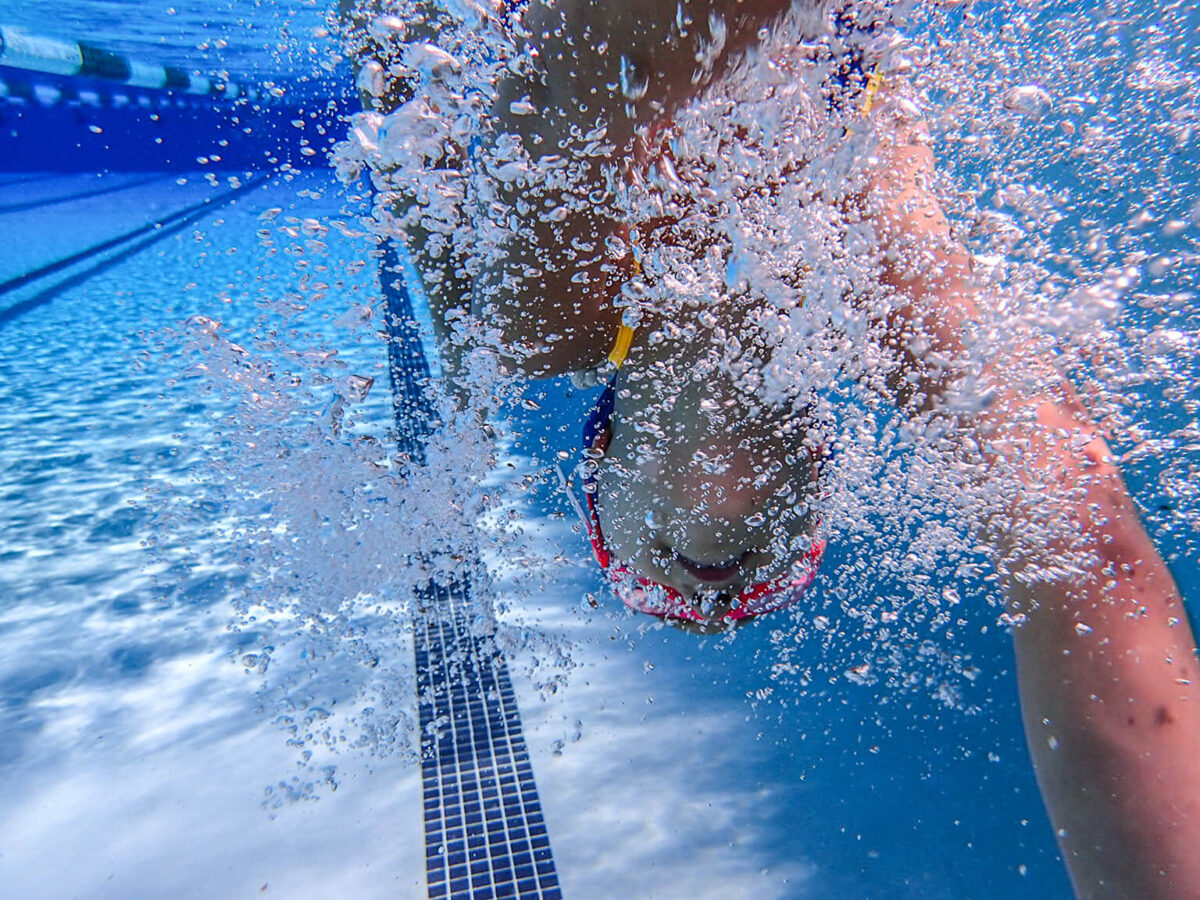Words by Andrea Gemmet
It took going broke in Australia for former Olympian Dana Kirk to rediscover her competitive fire. An All-American swimmer for Stanford Cardinal who competed in the 200-meter butterfly at the 2004 Athens Games, Dana had undergone back surgery after graduating in 2006 and decided to quit the sport—“nailed my suit to the wall,” as she puts it. The timing was right for a long break, so in 2007 she bought a plane ticket and was knocking about Down Under while her savings dwindled—to the point that she was swapping tips about cheap eats with a homeless man. “We’d find each other and figure out which Subway location was having a $2 deal that day,” Dana says, laughing at the memory.
All she wanted was to get by long enough to meet up in Sydney with her sister Tara, a member of the U.S. team coming to compete with the rival Australians in a friendly meet called “Duel in the Pool.” That was when Dana got a lucky break. While she was swimming laps one day, an Aussie swimmer recognized her and introduced Dana to her coach. The coach, hearing about Dana’s dire straits, set her up with a job coaching and giving swim lessons. It was enough to keep Dana fed and cover the drop-in fee at the pool, where she could practice alongside Australian National Team swimmers. She found she was doing surprisingly well, and her competitive drive was rekindled. “I love luck,” Dana declares.
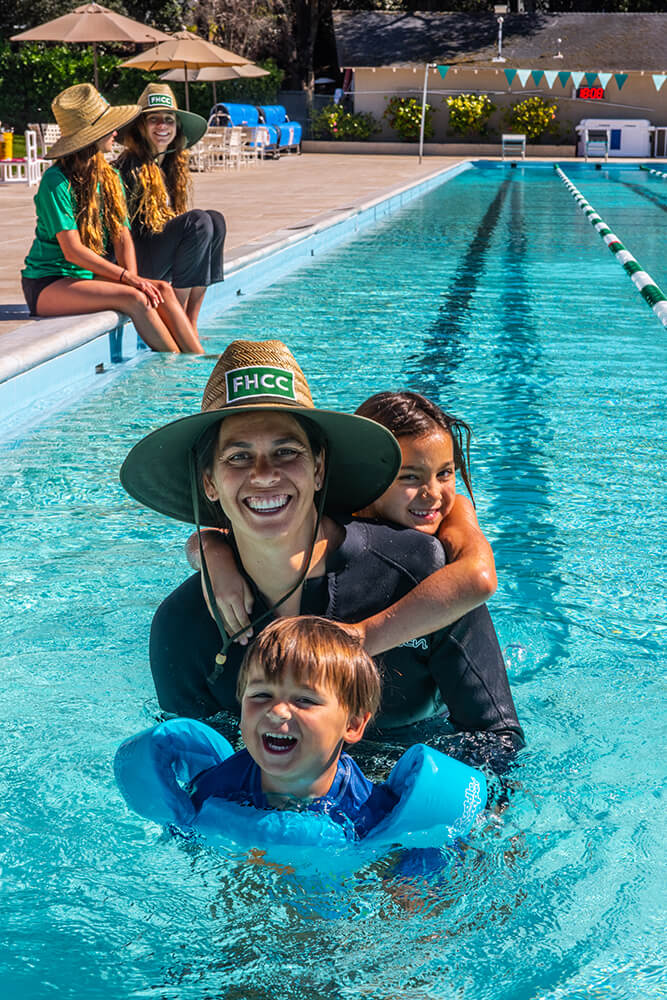
Dana and her older sister Tara were teenagers when they made their debut at the 2000 U.S. Olympic Trials. Four years later, they were the first sisters to earn spots on the same American swim team. Tara left the sport for good after a heartbreaker at the 2008 trials kept her off the Olympic squad, and while Dana didn’t do well at those trials (“I did not train for it the way I should have,” she says.), she’s never strayed far from the water. These days, Dana’s the director of aquatics at Fremont Hills Country Club in Los Altos Hills, where you can find her on the pool deck overseeing the Masters swimmers, in the water teaching a four-year-old beginner or coaching promising teens with their own Olympic dreams on the Barracudas swim team.
Dana first took the plunge at the YMCA in Bremerton, Washington. “The town we lived in was so small, we would have a coach for like six months. And then they would go off and find someplace better,” she recalls. Whenever a coach left, her father would fill in until another one was found. Though she swam for increasingly competitive swim clubs, the humble Bremerton Y has a special place in her heart. “It was super cool because a lot of Olympians actually learned to swim there,” Dana says, mentioning gold medalists Megan Quann (Sydney 2000) and Nathan Adrian (Beijing 2008, London 2012).
Dana rose through the ranks, collecting 17 All-American titles and eight Pac-10 conference titles. She put in the laps and honed her butterfly, earning a place in her final Olympic Trials in 2012. And while she didn’t make the team, she gave it her all and was able to leave the sport “the right way” before retiring from competition for good. Dana’s been at every Olympic Trials since then as a coach.
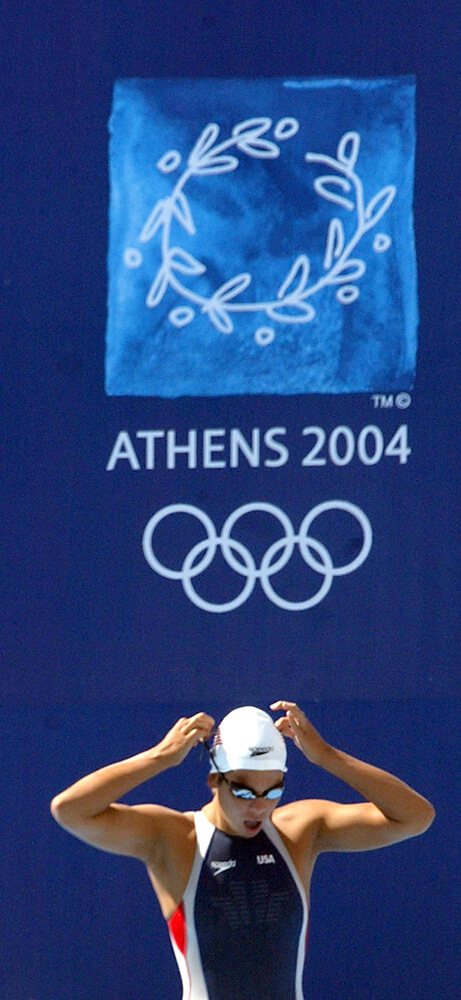
Dana gets ready to swim in the 200-Fly prelimaries at the 2004 Athens Games. / Photo courtesy of: Dana Kirk
It was at Dana’s first Olympic Trials that one of the coaches noticed something. He referred to it as Dana’s “chaos cloud.” While most athletes crave calm right before their event, Dana seemed to thrive when things went sideways. In 2000, swimmers were starting to compete in specially designed suits that went from their shoulders to their ankles, “and if you could put it on in less than half an hour, then it was too big,” she says. “I couldn’t get my suit on—I’m running down the pool deck between coaches, trying to put my suit on at the same time as I’m trying to bob through so I can get to my lane on time.” Dana still did well enough to get into the semifinals.
Those complicated swimsuits also figured in Dana’s 2004 Trials, when she made it on the Olympic team. She and her good friend Mary DeScenza were in the locker room helping each other suit up, a laborious process that involved wearing plastic bags on their hands so the rough outer fabric didn’t cut them. “It would friction your skin off your fingers,” Dana describes. There was a power outage. Dana darted out of the locker room to grab something, leaving her credentials behind. And that’s when things fell apart. Mary grabbed Dana’s forgotten credentials and brought them to the ready room—a place you couldn’t enter without credentials. Dana was trapped outside until Rick Benner recognized her. “Megan Quann’s coach had to vouch for me,” she recalls. “And I was in the next event!”
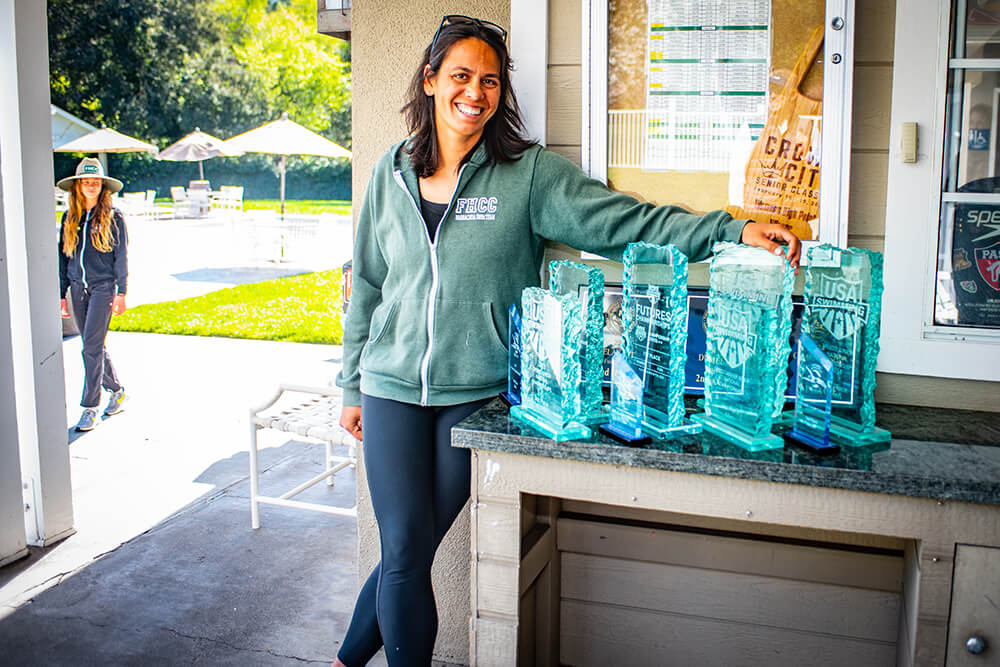
After reuniting with her friend and her all-important credentials, another athlete might have been understanably upset. But not Dana. “It was OK because my little chaos cloud was like, ‘Ahh, chaos achieved! Let’s go fast,’” she says. “My chaos cloud is helpful for me.”
And that still holds true today. Dana says she’s happiest when she has “a little too much to do” in her schedule every day. Despite having a demanding job and three young children, Dana joined San Francisco Underwater Rugby, an improbable contact sport played in the deep end of a pool. “I guess that’s what I do,” she laughs, “fill every minute and have as much fun as possible.
Another strength that has served Dana well is that she’s a classic early bird. Those pre-dawn workouts don’t faze her. And she actually enjoys the enormous amount of work that goes into the sport. “As the kids say, ‘Embrace the suck,’” Dana muses. “Nobody wants to do the super-hard workouts, but they want the results. But I really like to work hard.” She brings this philosophy to her coaching: If you put in the work, eventually it’s going to pay off.
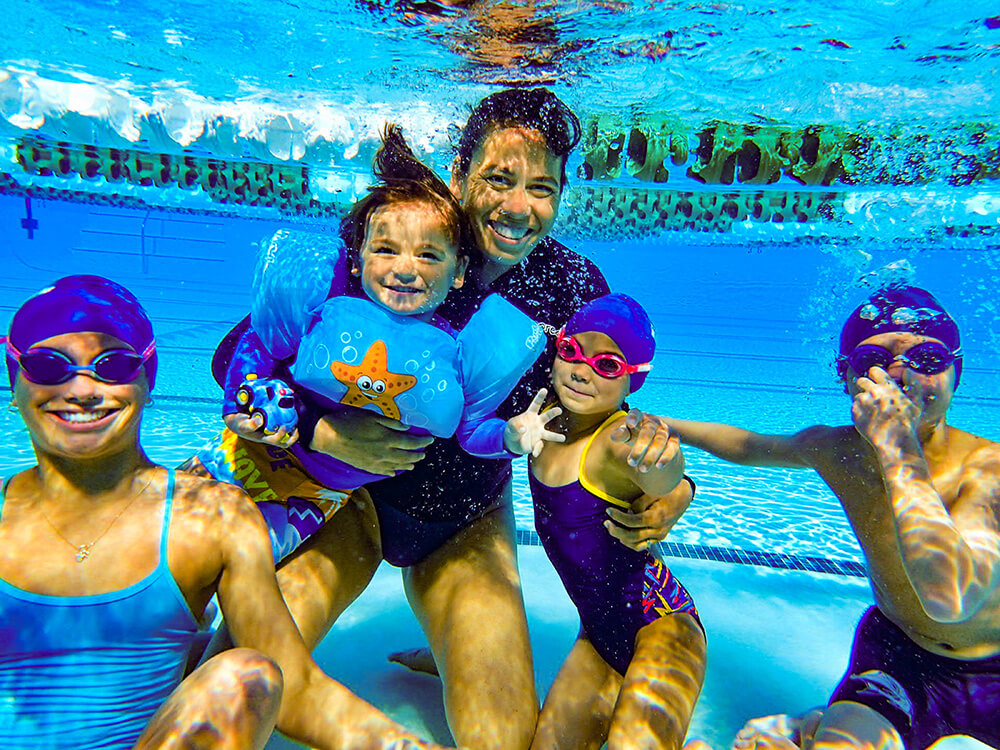
Dana takes a dip at Fremont Hills Country Club with her children, Thomas, 2, and Lilly, 6, plus Macie Benson and Everett Kaiser, two of the kids she coaches.
“I always wanted to be a teacher, but I thought I’d be teaching history,” Dana reflects. “Maybe I’m not helping society as much as a school teacher, but my job … is always to convince kids to do the harder thing—the harder interval, the harder set—to get the better result.”
In a sport where success is measured with timers and medals, there’s a lesson Dana is trying to get across to her young swimmers: The process is more important than the result. “Let’s succeed. Let’s go to nationals, let’s go do those great things,” she declares. “But the thing that really matters to me is that when they leave the program, they still love the sport. And that’s more important than anything else.”


